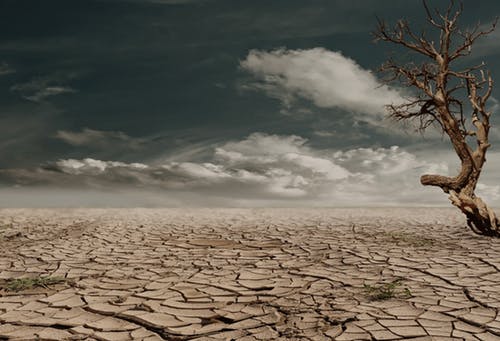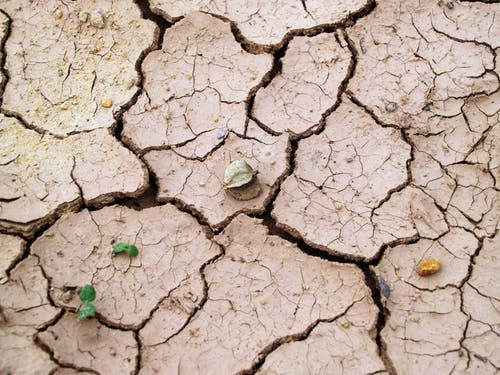Climate change threatens Ghana’s vulnerable agricultural sector
The booming oil and cocoa sectors make Ghana one of the fastest growing economies in Africa. The Ghanaian economic growth rate slowed to 6.8 percent in the first quarter of 2018. Nevertheless, growth is projected to pick up again in 2019. This will help in providing jobs for the country’s nearly 30 million people. These projections have prompted President Nana Akufo-Addo to pledge investments in agriculture, education, and manufacturing.
Last November, the President urged farmers to emulate neighbouring Cote d’Ivôire’s economic advances in agriculture. Cote d’Ivôire racked up $16 billion in revenue from oil and cocoa – versus Ghana’s $2 billion.
Yet the drawbacks of an enlarged economy are ever present. As it stands, the revenue gained in the Ghanaian agricultural sector remains saturated in its cocoa production. This means that other crops lack the same government subsidies needed to expand. This, however, is not the only hurdle facing farmers.

When scientists from the University of Texas and the University of Arizona studied the layered mud and dead trees in Ghana’s Lake Bosumtwi, they found that droughts have been prevalent in Ghana for the last 3,000 years. Published in the journal Science in April 2009, their report found that although droughts are inevitable, human-led greenhouse gases are likely to exacerbate the country’s severe droughts.
Drought conditions affect the market in cereals and legumes like barley, wheat, faba beans and animal production. A perceived lack of prospects by Ghanaians in agriculture further worsens the sector’s ability to expand. Additionally, cheap imports of animal products from Europe and the US undermine land and animal farming efforts in this country. President Akufo-Addo said he would consider reducing taxes on imported fertilizer to ease international competition from imported goods and strengthen the local market.
Greenhouse gases, poor land management, and water unavailability are the main causes of drought aside from natural temperature changes. According to a 2007 UN Economic & Social Council report, drought is ‘projected to be one of the greatest constraints to economic growth in the future’.

Ghana is situated just below the Belt of Africa. The region is greatly affected by severe drought. The build-up of heat from human activity, in an expanding economy, is one of its greatest perils. Overheating comes hand-in-hand with overgrazing as countries aim to increase food production for an increasing population. Poor cropping methods reduce the soil’s ability to retain water. Both these factors lead to desertification and displacement as local farmers struggle to sow and harvest crop. The World Bank estimates the rural population in Ghana to be 45.32%. Thus, half of the population depends on the land and the weather to survive.
Hotter temperatures and a decrease in annual rainfall also exacerbate the onset of disease. This also harms farming in local animal production. Climate change management is crucial for Ghana’s increasing population and growing economy. Fundamental changes must be implemented on a large scale to ease the effects of water unavailability and food insecurity, as well as a heavy reliance on the oil and cocoa sectors.
The Climate Change Technology Centre and Network (CTCN) provides the technological assistance needed to tackle these issues. It is funded by The UN Environment Programme and Industrial Development Organization. Its technology will provide ‘early warnings’ to Ghana using satellite-based data in the hopes to improve crop resiliency, particularly in the dry season.

CTCN will mainly relay climate forecasts to Ghana’s agriculture sector and advise on how to mitigate the impact of drought. It will focus on national and regional organizations. It further aims to set up ‘tailored and tested’ technology in local areas for drought preparation. This will provide vital knowledge, but ultimately, it is up to stakeholders to alleviate the effects of climate change on the inevitable droughts to come.
A key focus of Feed A Million Mouths International’s work in Uganda and East Africa is in tackling hunger in impoverished areas. The negative effects of climate change here will only serve to exacerbate the issue of hunger in countries like Uganda further. Please partner with FAMMI today and ‘Buy Breakfast’ for an at-risk person, family or community in Uganda – https://paintandparty.org/buy-breakfast.html.
About the author:
Sabrine Donohoe is a final year student of journalism at Dublin City University. She is interested in reporting on hard news and international affairs, particularly anything to do with politics, economy, or the environment. She love animals, likes to travel, and likes to take photos of anything that catches her eye.

Your point of view caught my eye and was very interesting. Thanks. I have a question for you.